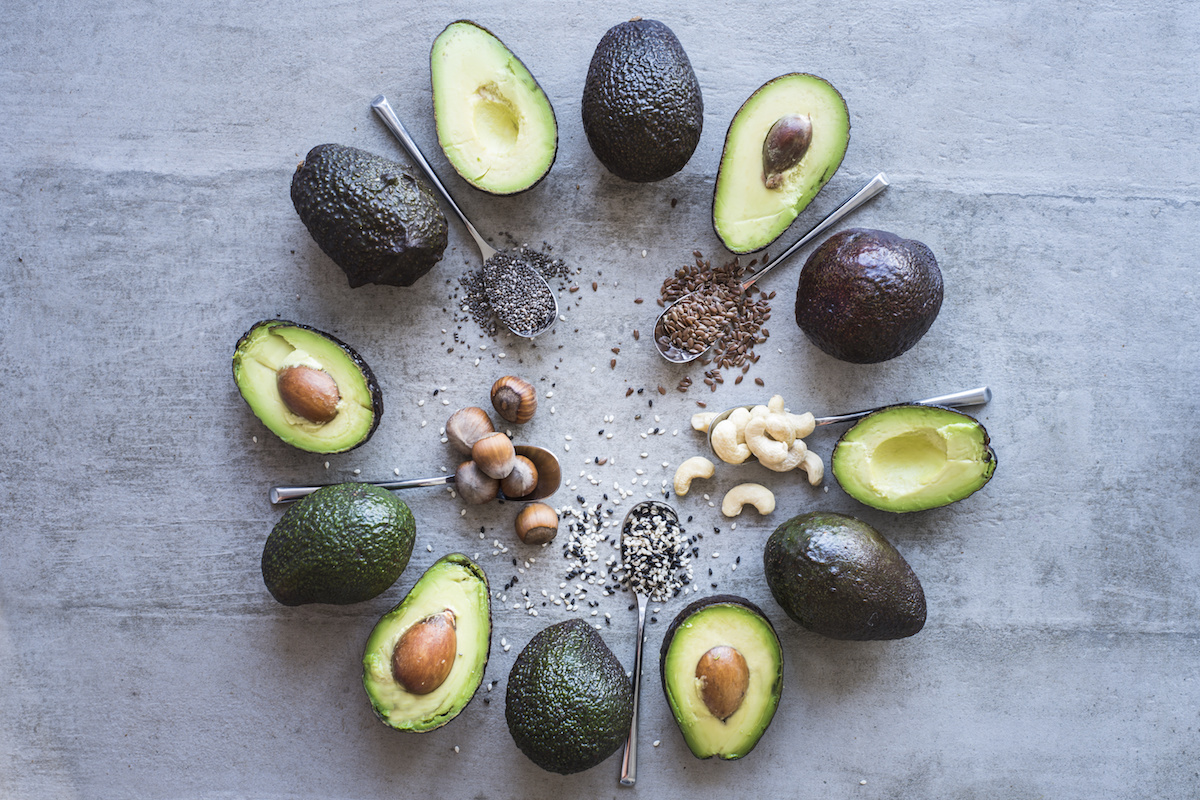What Is the Keto Diet and How Exactly Does It Work?

The keto diet broke through into the public consciousness in 2018 (it was that years most searched diet trend according to Google), and since then has surpassed the buzz to cement its position as one of the most popular and talked-about diets around. In fact, a 2020 survey of registered dietitians named the low-carbohydrate keto diet as the most popular diet in the United States.
But how did keto make it to the top of the dietary podium? What exactly even is it? And can it really be relied on for healthy, long-term nutrition?
A high fat, low carb diet touting benefits beyond body composition alone, in this short course, we’ll take a microscope to the increasingly-popular diet, touching on everything from its hailed metabolic advantage to its criticisms. To begin, though, let’s take a look at how it all began.
What Is The Keto Diet?
The keto diet was first developed as a treatment for epilepsy, with trials recorded in the 1920s. These early incarnations were extremely strict with 90 percent of total energy coming from fat and only 10 percent coming from carbohydrate and protein combined. In absolute terms, this translated as a ratio of 4:1 fat to carbs and protein – essentially a very low carb, low protein, high-fat diet. Meeting this ratio was deemed therapeutic for epileptics but only feasible for in-patients, under strict supervision and with supplementation.
Fast-forward a few decades and in the early 70s, Dr Atkins began to apply aspects of keto diets to weight loss, leading to the development of the Atkins diet characterised by low carbohydrate but without limits on protein or fat. This low carb, high protein, high-fat diet became hugely popular as a weight loss diet as you could still eat as much fatty foods as you liked. But where the Atkins diet received so much criticism is that it by-and-large didn’t limit protein.
The modern ketogenic diet (outside of a clinical setting) is typically a modified Atkins diet (MAD). This MAD diet restricts carbohydrate more prescriptively to 20 grams per day, with limits to protein, but more achievable for people by recommending a ratio of 1:1 fat to carbohydrate and protein. In essence, it’s a very low carb, moderate protein, high-fat diet. That is not to say this MAD diet is easy to follow though. Limiting carbohydrate to 20g per day is a challenge. The evolution from here was the ketogenic diet as we more commonly know it.
Carbs Vs. Fat
When we think of ketogenic diets not in their clinical sense, but as a way to optimise health and alter body composition, it really all comes down to the ongoing nutritional feud between pro-fat and pro-carb camps. This binary way of thinking is not at all helpful, but is a key catalyst for increasing promotion of the keto diet.
Fronted by American physiologist Ancel Keys, the low-fat model has been the public health message since the 1960s. But regardless of this, there has been little evidence to show for this message in terms of a change in obesity levels. If anything, obesity has increased, and though death from cardiovascular disease has dropped, the prevalence has remained high.
A keto diet proposes a polarising view, prioritising fat. Where conventional diets tend to look at reducing energy (calorie) intake (and consequently see a reduction in fat, the most energy-dense macronutrient, alongside carbs and protein) on the surface the keto diet is not necessarily concerned with calories at a top-line level, but reducing carbohydrates specifically and replacing the with fat as your main fuel. In doing this, you’re sold the notion that your metabolism is forced to reorganise to burning more fat and to supplement where you can via ketones, despite not necessarily eating less.

How Does The Keto Diet Work?
There’s more to the ketogenic diet than just a demonisation of carbs and an embrace of fat though. Knowing exactly how a ketogenic diet affects functions of the body and brain is key to understanding its metabolic, mental and behavioural impact.
Keto Biochemistry 101
The dramatic reduction in carbohydrate intake when following a ketogenic diet will naturally trigger a reduction in insulin. Insulin is released in response to an import of carbohydrate in the system; you take it and utilise it in muscle and sequester it away in adipose tissue (fat stores). But it’s important to note that while people often talk about the carbs we eat going straight to adipose tissue, it’s actually muscle that uses the bulk of carbohydrate in the body. Plus, carbs cannot store significant amounts of fat in adipose tissue single-handedly.
If you haven’t got carbohydrate coming in, then insulin response is minimal, meaning muscle uptake is equally minimal. This is deliberate so you can maintain a steady supply of carbohydrate in the blood in order to fuel the brain.
Without insulin, you aren’t utilising as much carbohydrate in the muscle or storing triglyceride in adipose tissue. Of course, you still need fuel, though. The carbohydrate you have still gets used: muscle may still use stored carbohydrate when needed, and your liver stores of glycogen can be used to keep blood glucose topped up. In turn, to continually maintain blood glucose, you stop using carbohydrate where you can and start manufacturing it.
To preserve carbohydrate for the brain, your other tissues start using an alternative fuel to preserve carbohydrate: fatty acids. The lack of carbohydrate in your system forces the body to begin liberating fatty acids from stored fat, but don’t forget the fatty acids from the diet-derived lipids circulating around your blood which you’ve taken in from your high-fat ketogenic diet.

Carbohydrate stores are limited, and eventually you’ll have all but exhausted carbohydrate stores (glycogen stores don’t ever go down to actual zero). Naturally, you start supplementing for that carbohydrate by making more of it, using amino acids and glycerol from the circulating fatty acids you have used. But you can’t do this forever because it’s energy costly and you can’t sustain a supply of building materials as you will soon compromise muscle protein.
And here’s where we begin to produce ketones in the liver (predominantly). Ketones, unlike lipid, can cross the blood-brain barrier and can be used as another substrate of energy in the brain, taking the pressure off of having to solely supply glucose. From this, you achieve a state of ketosis – the significant build-up of ketones in the blood.
The Metabolic Advantage
From a body composition point-of-view, the fact that on a ketogenic diet you’re not storing fat in adipose tissue, but releasing it, is its major draw. You’re training your body to utilise its good-as-unlimited stores of energy from fat, breaking down fat stores for fuel.
The other advantage is if you’re glucose intolerant (such as in diabetes), then you’ve removed one of the problems. Ketogenic diets have been used historically for type 1 diabetes, because if you don’t have any insulin, you can deal with that by simply removing carbohydrate. Of course, modern management of type 1 diabetes involves injecting insulin and moderating carbohydrates in a much more sophisticated way, but 100 years ago it proved relatively effective.
By preferentially breaking down body fat and using that to fuel the body, there will be improvements in insulin sensitivity, too. This is because body fatness (in adipose tissue but also ectopic fat in organs) is intrinsically linked to insulin resistance. If you force the body to liberate fat, it in turn alleviates insulin resistance.
Also linked to this metabolic effect are possible increases in energy expenditure, which could help energy balance. The carbohydrate-insulin model suggests a move to a ketogenic diet might drive up energy expenditure because you might be alleviating “internal starvation” (due to too much uptake of fuel in adipose tissue), purportedly conducive to a conventional diet.

Mental And Behavioural Effects
Another key effect of this change of fuel takes place in the brain. Here’s where we can take the ketogenic diet back to its roots as an epilepsy treatment, because it creates a central effect in the brain thanks to the circulating ketones in your cerebral fluid. Think of it as you effectively burning nail polish remover (acetone) as a fuel. Anecdotally, how this manifests most profoundly is through appetite suppression, and people reporting an increase in perceived energy.
But perhaps one of the most underplayed upshots of a ketogenic diet is behavioural, (this is explored in more depth in our keto diet course, details of which you can find at the bottom of this article). On a ketogenic diet, people may feel fuller and despite any notion of cutting calories in the literature actually end up eating less food.
Moreover, people following a ketogenic diet become more conscious of what they’re eating; more so than when you simply tell them to reduce calorie intake, because you’re asking them to do it in a specific food group. Cutting carbohydrates is particularly effective in this case, because this macronutrient tends to cover those foods which people most often overindulge – palatable treats such as cakes, crisps, biscuits, chocolate, pizzas, fast food and so on. Hence, people are far less likely to passively overeat. The end result is that people will consciously and unconsciously eat less food.
People forget about this effect, but it makes up a big part of why ketogenic diets are both popular and effective. We’ll look more at this idea of a wholesale change to the diet in tomorrow’s instalment, along with other proven benefits.
This article is an adapted excerpt from our short course on the keto diet. The course encompasses five emails on the topic explaining the benefits and criticisms, to where the future of the diet lies, all sent daily to your inbox. To find out more or sign up click here.


















